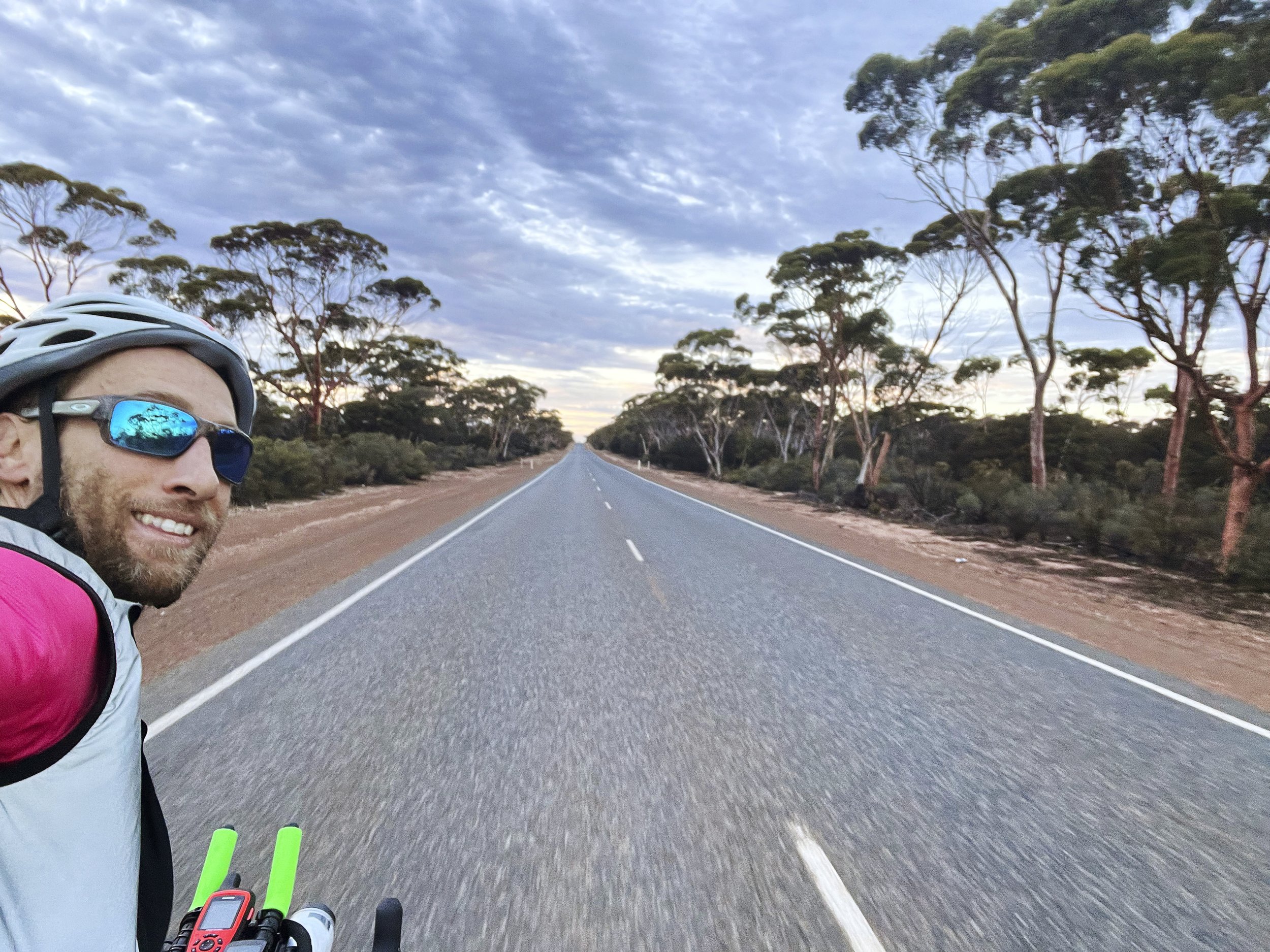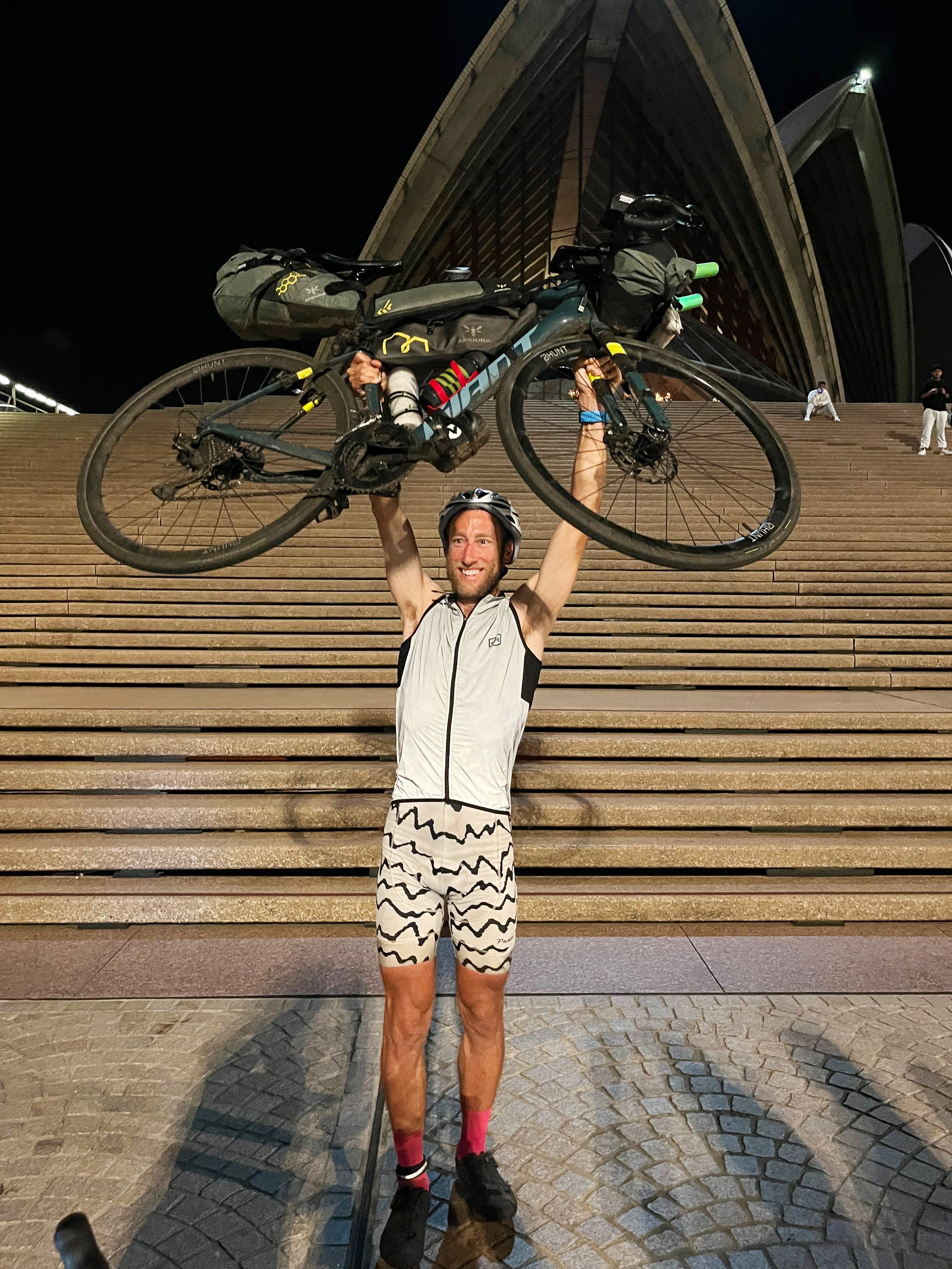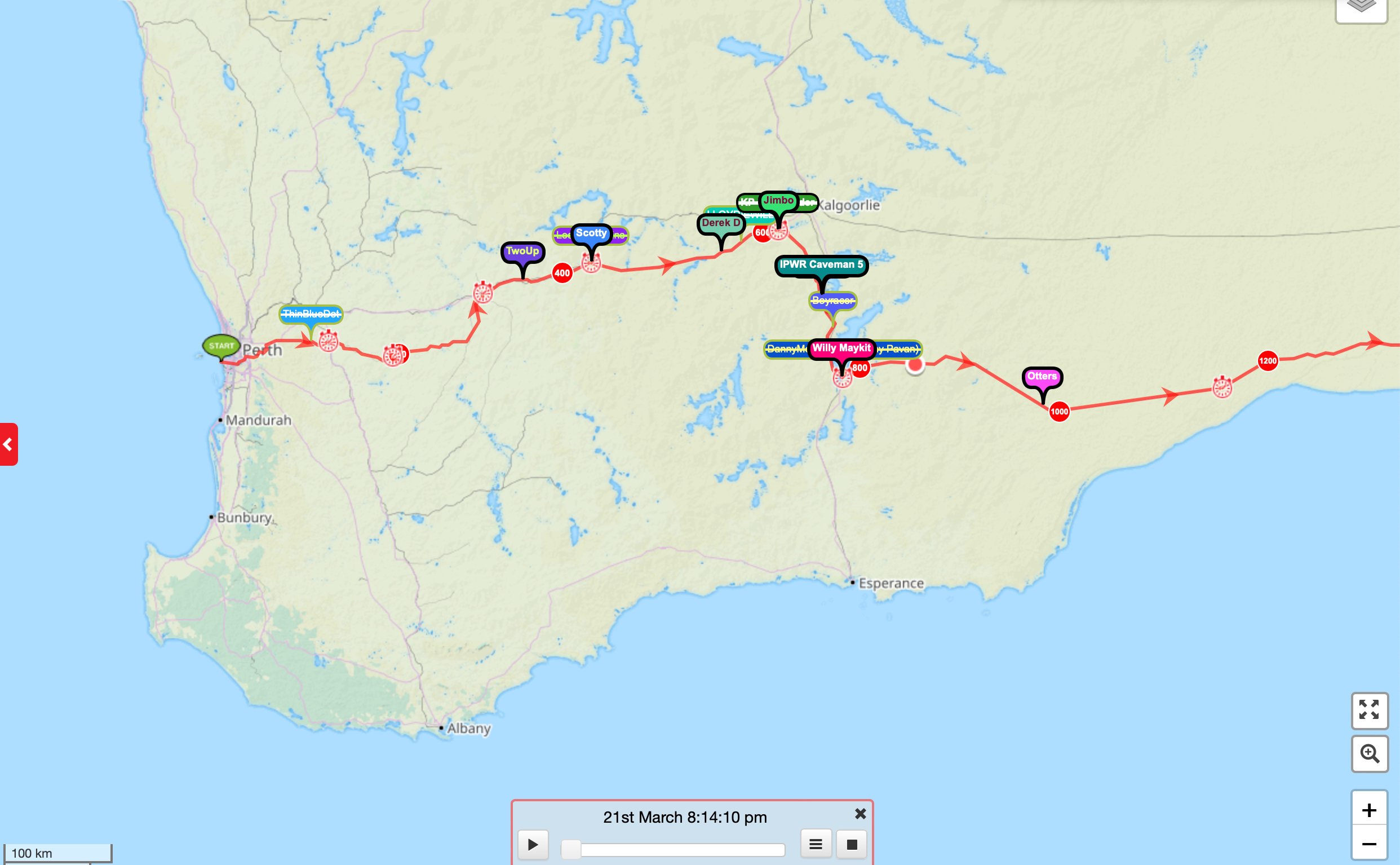IndiPac
Perth physical education teacher Colin Ottaway was first to finish the 2022 IndiPac.
‘My plan was to ride for 15 hours, stuff around for two hours and sleep for seven hours. Which I thought was sustainable. Providing I could eat enough.
You pull in at a roadhouse to get some food and people look around and ask ‘What are you doing? You’ve obviously ridden a fair way.’ I say we're going from Freo, we're heading to Sydney and that's all I've got. I can't remember the roadhouse, but I remember some kid who was so blown away, at the whole idea and concept.
It's a sense of achievement and accomplishment as I look back on it. Right across the country. In 17 days. And you meet some people. You share this bond that you're an overlander and you've ridden across the country.’
The tragic early morning death of competitor Mike Hall on the outskirts of Canberra brought 2017’s inaugural Indian Pacific Wheel Race event to a sudden, unexpected close.
The IndiPac as it has become known was the brainchild of Melbourne bike builder and winner of the 2015 Trans Am Bike Race, Jesse Carlsson. It was designed to reanimate the overlander spirit and celebrate cycling in its purest form — the rider, the bicycle, and the road.
Aside from being a self-supported ride the IndiPac has become self-organising; within days of the cancellation of the 2018 second edition, many entrants chose to ride the route unofficially. Subsequent years have seen riders meet at Fremantle’s South Mole every third Saturday in March. At 6:22am, the time of the impact that killed Mike Hall, there is a minute of silence before riders ‘clip in' and head for the Sydney Opera House.
Ultra-distance rides return us to a landscape devoid of sponsorship and support teams, and propel us into the world of dot watchers, vlogs and trail angels. A century and a quarter after Arthur Richardson’s ride from Coolgardie to Adelaide interest in the crossing remains undiminished.
Followers of Oppy’s 1937 record ride turned on the wireless to track his progress, marking it off town by town on pamphlets distributed by sponsor Malvern Star. Today spectators watch signals from tiny transponders move across an onscreen map, and get detailed rider updates from videos on riders’ social media.




